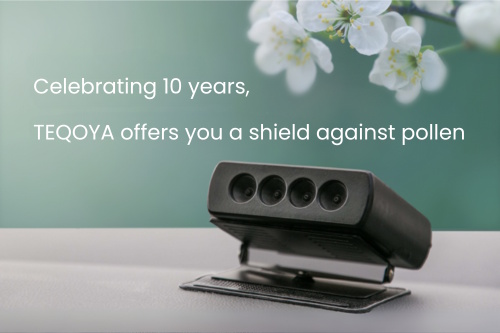Beware of so-called depolluting plants
The use of plants to purify indoor air is attracting increasing interest from the general public. The purifying properties of plants have indeed been demonstrated in laboratories. However, in real-life situations, plants do not have any significant effect on indoor pollution. For allergy sufferers, they even constitute a danger to the environment.
The results are conclusive in the laboratory
The notion of a depolluting plant was introduced by NASA in the 1980s. Dr. Wolverton was conducting research on air purification in space shuttles. In 2010, thanks to the Phytair programme, the Observatoire de la Qualité de l'Air Indoor has deepened our knowledge of the ability of plants to purify the air.
Indeed : agglomerated wood furniture, paints, glues, varnishes, solvents, deodorisers, coatings, detergents and carpets present in our homes emit toxic volatile organic compounds (VOCs). These chemical compounds damage the lungs. and can cause various headaches.
Three houseplants, which are very popular with the general public, were exposed to highly concentrated pollutants: Devil's Ivy, the Spider Plant and the Dragon Tree. Under controlled laboratory conditions, they capture between 30% and 90% of the pollutants present in the air. They are effective on carbon monoxide (CO), formaldehyde, ammonia, toluene, xylene, trichloroethylene and benzene. Some of these pollutants are present in cigarette smoke and in household products (insecticides).
There is also a wide variety of plants considered as depolluting plants :
- Spathiphyllum, a resistant and easy-care plant
- Ficus, which is also easy to care for but dreads direct sunlight.
- Pothos
- Chlorophytum
- Palm tree
- Fern
- Philodendron
- Anthurium
With their roots and leaves composed of living micro-organisms, these plants convert pollutants into organic products in order to feed themselves.
These results have not been validated in real-life situations.
The last phase of the Phytair programme took place under real exhibition conditions. It did not demonstrate the effectiveness of depolluting plants on indoor air quality. With a realistic number of plants in a room, air purification is in fact almost nil. For Joëlle Colosio, head of the air quality evaluation service at Ademe, the awarding of an "air purification capacity" label to a plant therefore appears "largely premature".

The undesirable effects of depolluting plants
Plants can have undesirable effects, especially on people with allergies. Some plants spread allergenic pollen. Others have allergenic sap. Above all, the soil in the pots is rich in moulds, including the spores are allergenic. Finally, houseplant care products can themselves pollute the air.
Information on air quality and news from TEQOYA
How does an air ionizer work?
#Essential
Natural environments are rich in negative ions. This is precisely the principle on which the air ionizer is based on. However, do you know how this technology manages to capture the pollution particles contained in the indoor air to purify your home?
Are air purifiers effective against viruses, especially the coronavirus COVID-19
#Virus and microorganismes #L'essentiel
In December 2019, a respiratory virus of the Coronavirus family appeared in the Wuhan region of China and has now spread to all continents.
What is eco-responsibility?
#Essential
Purifying indoor air while protecting your health and the planet is possible! Say goodbye to filters and make way for negative ions: choose an eco-responsible air purifier that will easily reduce energy and resource consumption.

